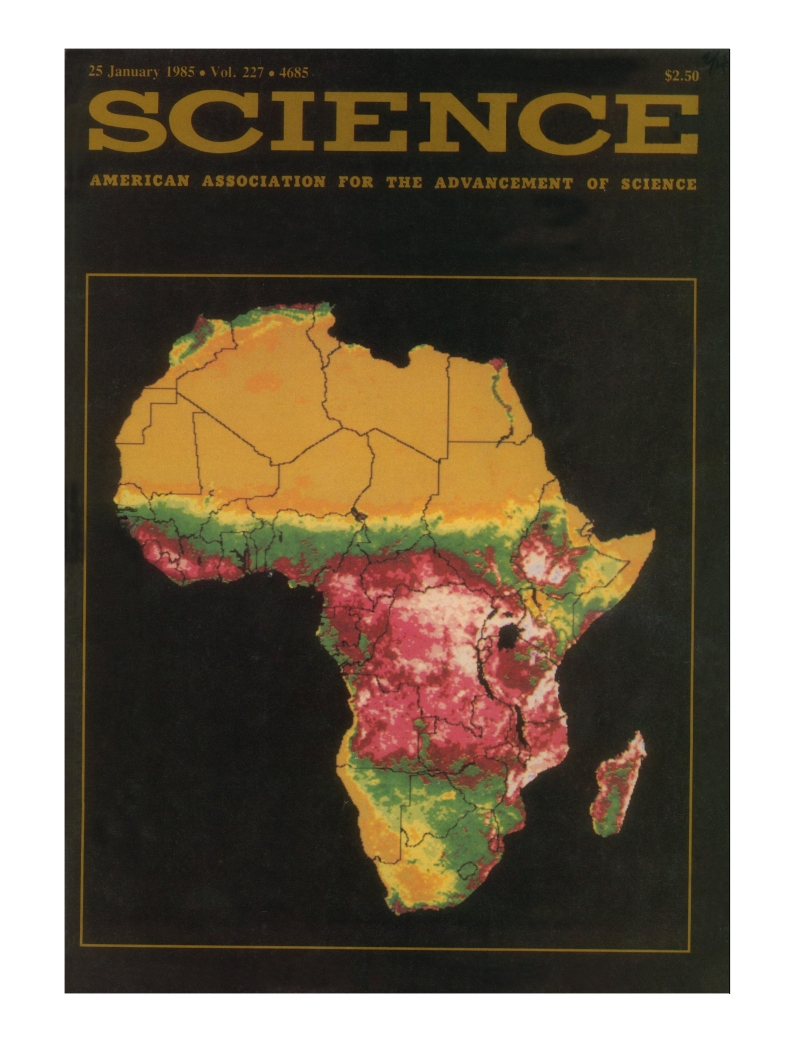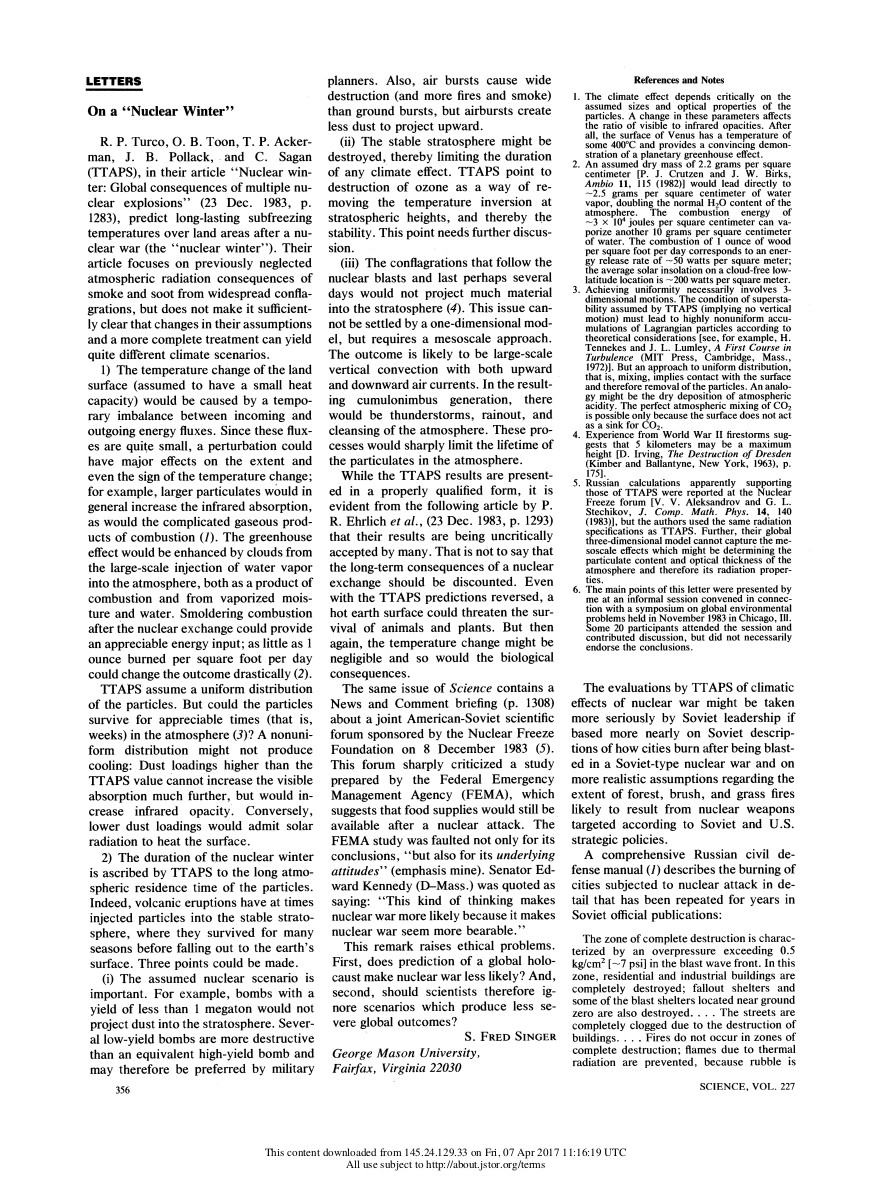

Science published several letters in response to the 1983 article "Nuclear winter: Global consequences of multiple nuclear explosions" (R.P. Turco, O.B. Toon, T. P. Ackerman, J. B. Pollack and C. Sagan, 1983), also known as TTAPS for the last names of the authors. Since it's publication in '83 several other studies had been performed, finetuning the models and strenghtening the science behind the original article. Nuclear winter, a dramatic drop in earth surface temperature for a period of weeks to months after a nuclear attack due to atmospheric dust, causing crop failure and potentially a lot of trouble such as famine. The initial study's predictions turned out a bit too extreme, but after 2 years of research it was clear that the atmospheric effects of nuclear war would be a serious threat that needed to be considered when deciding on defense strategies.
In his letter to Science, Singer attacks the TTAPS paper, claiming that the effects of soot and dust particles in the atmosphere would quickly dissapear as thunderstorms and rain would clean out the atmosphere. He asks if prediction of a global holocaust would make nuclear war less likely, and if it is ethical to ignore scenarios which produce less dramatic effects, as for instance using bombs creating airbursts instead of groundbursts.
To put this in perspective, in 1983 President Reagan launched his idea on how to achieve world peace: the Strategic Defense Initiative (SDI), otherwise known as Star Wars. The idea was to install a protective shield of weapons in space to destroy incoming ballistic missiles. This initiative was a response to the nuclear freeze movement, urging both the US and the Soviet Union to stop building nuclear weapons and their delivery systems (Oreskes and Conway, 2010). SDI was very controversial, many opposed it. Not only because it would increase the chance of nuclear war, fuelling the arms race, but mostly because if such a shield would fail, even only a little, it would have dramatic consequences. On top of that, SDI was untestable.
In 1984, in response to the growing opposition to Star Wars and the efforts of the Union of Concerned Scientists, Robert Jastrow, astrophysicist, founded the George C. Marshall Institute, promoting "science for better public policy". He invited Frederick Seitz, a physicist formerly employed by tobacco giant R.J. Reynolds, to be founding chairman of the board. Co-founder of the Institute was William Nierenberg, a physicist, and fierce defender of the SDI project. To give an idea of how much overlap there is between the different attempts to manipulate public opinion and steer governments away from regulating industry, Nierenberg was appointed head of a panel reviewing the evidence on acid rain on behalf of the White House Office of Science and Technology (OSTP) in 1984, even though he had never worked on acid rain research before. He changed the finished report's Executive Summary in response to questions from the science advisor to the president, George Keyworth. Next to that, an unapproved chapter, written by Singer, had been added as an appendix. These two changes were made without permission of the other members of the panel, interfering with proper scientific protocol, manipulating peer review. After these changes the report had a much milder tone and Singer's contribution casted doubt on the cause of acid rain (Oreskes and Conway, 2010, p.100). It wasn't until 1990, under the administration of George H. W. Bush that an emissions trading system would be implemented as an amendment to the Clean Air Act.

Source: Singer, S. Fred, Cresson H. Kearny, R. P. Turco, O. B. Toon, T. P. Ackerman, J. B. Pollack, and C. Sagan. "On a ``Nuclear Winter''" Science 227, no. 4685 (1985): 356-444. http://www.jstor.org.ezproxy.hro.nl/stable/1694351.